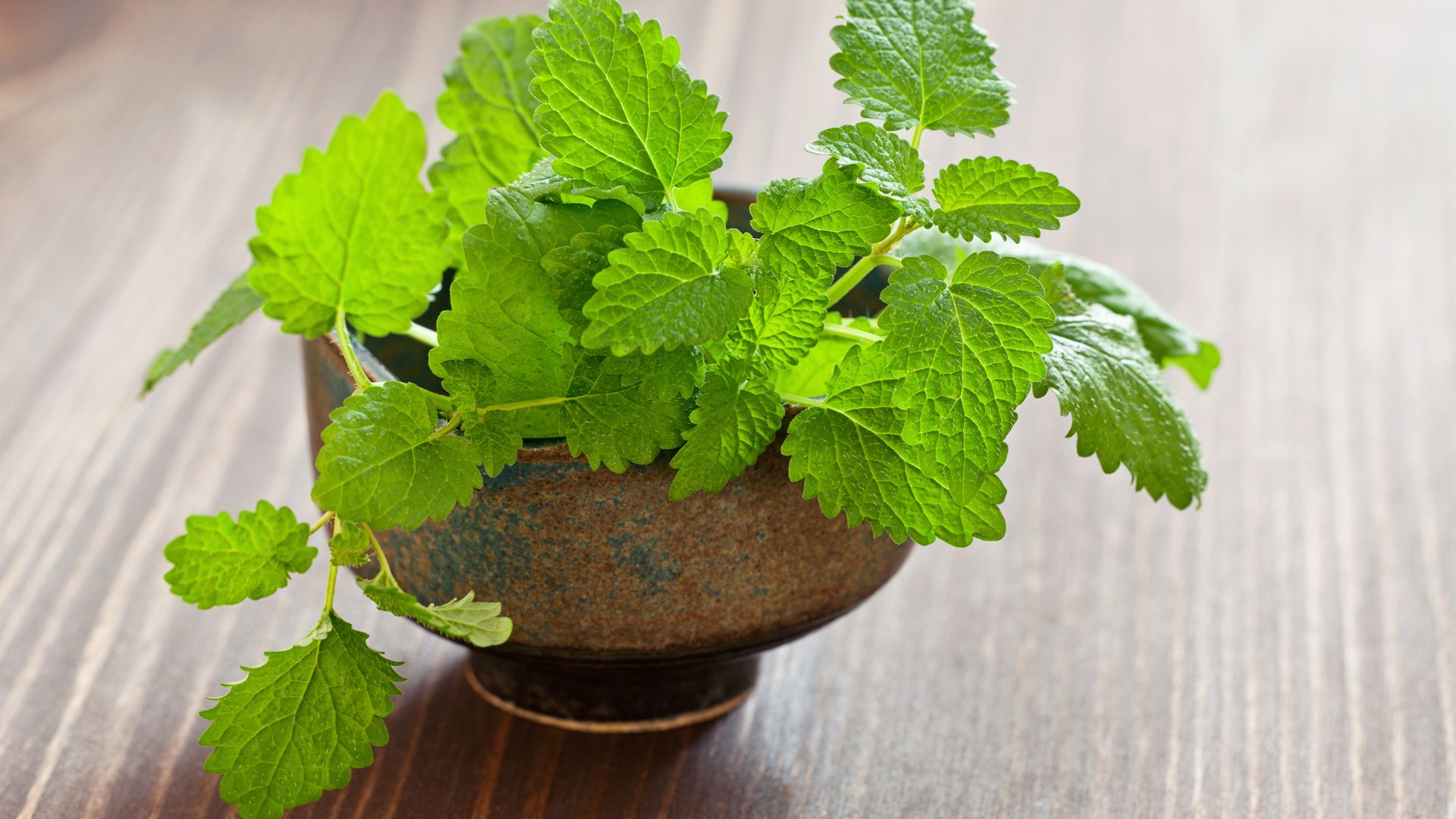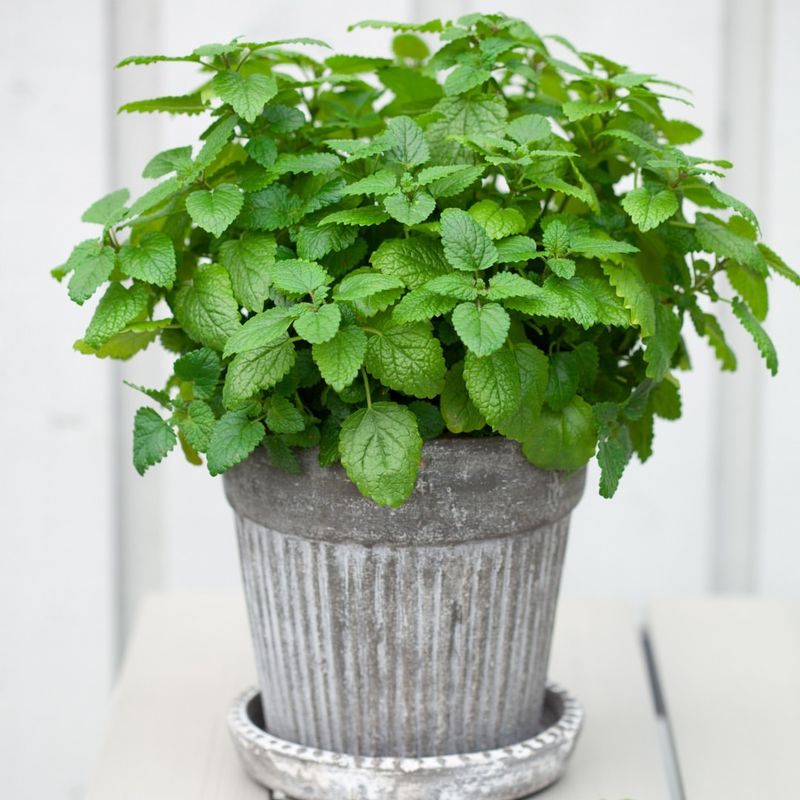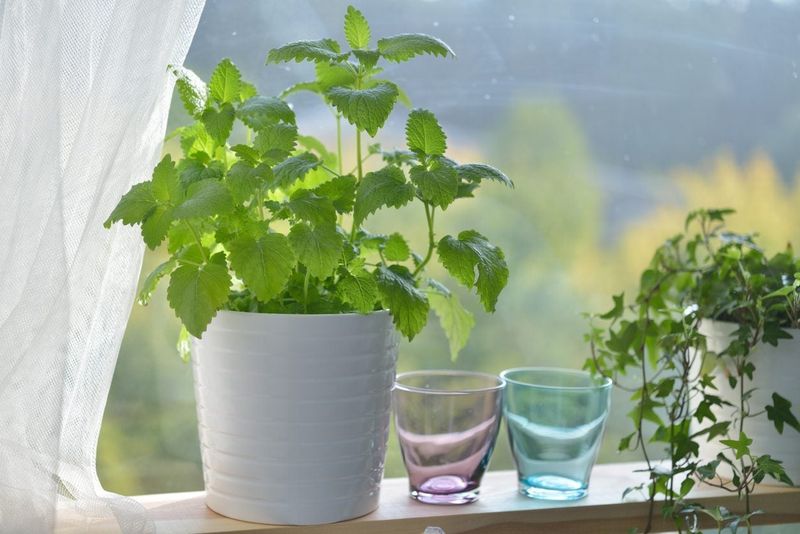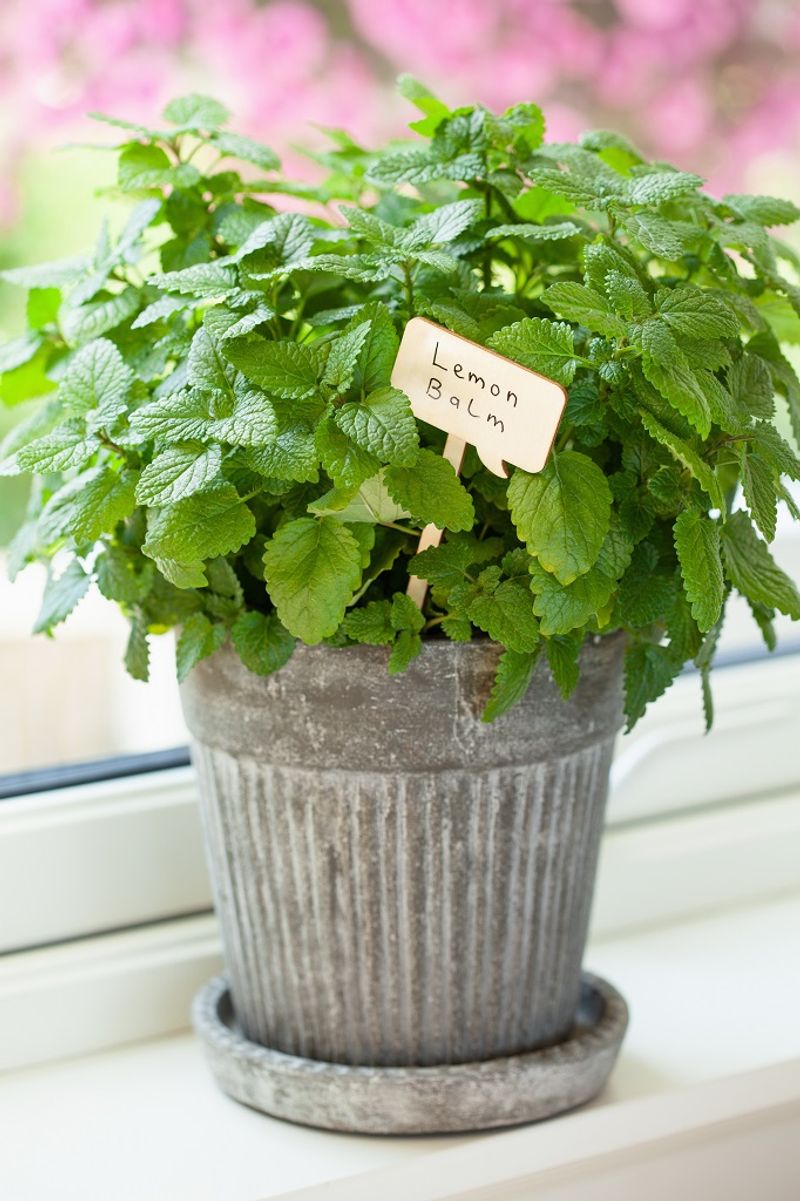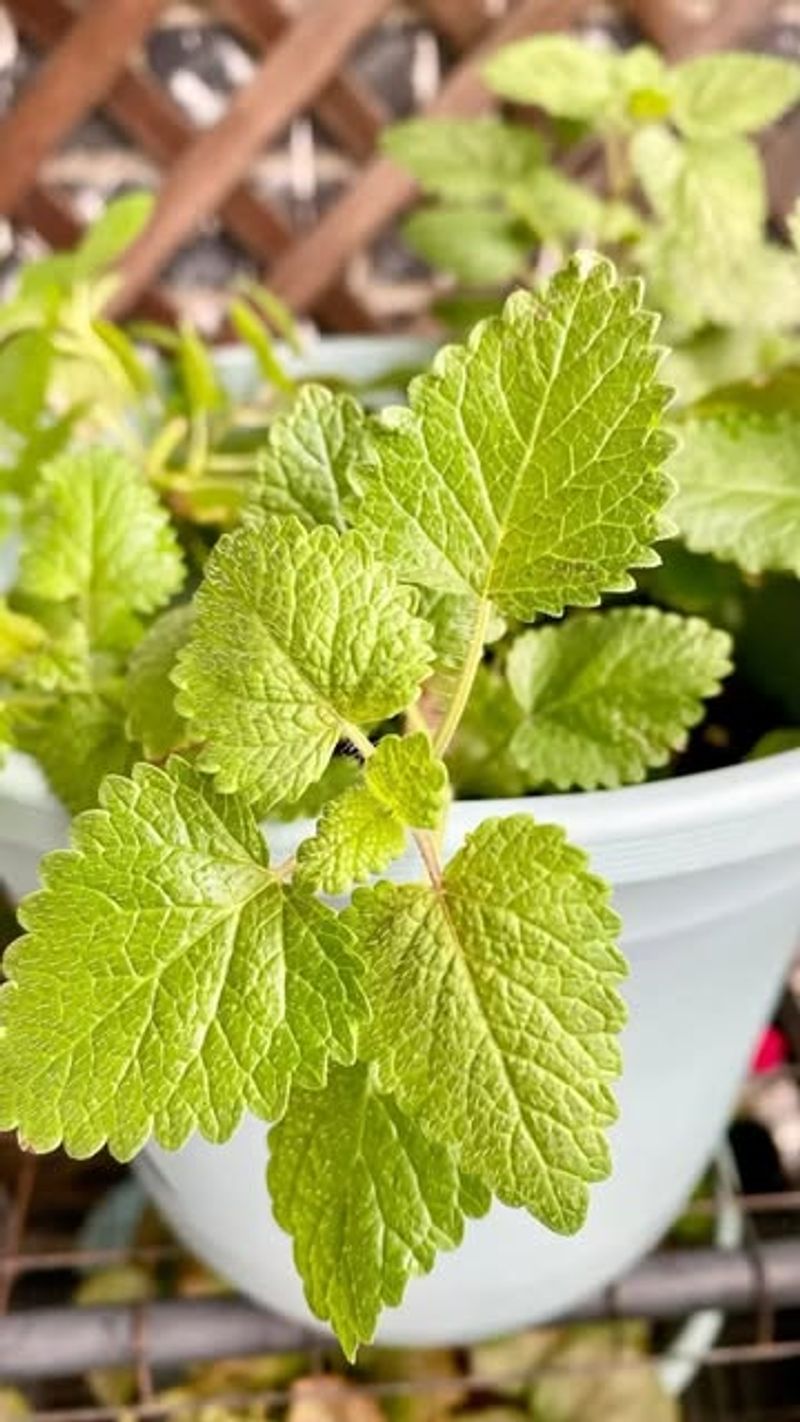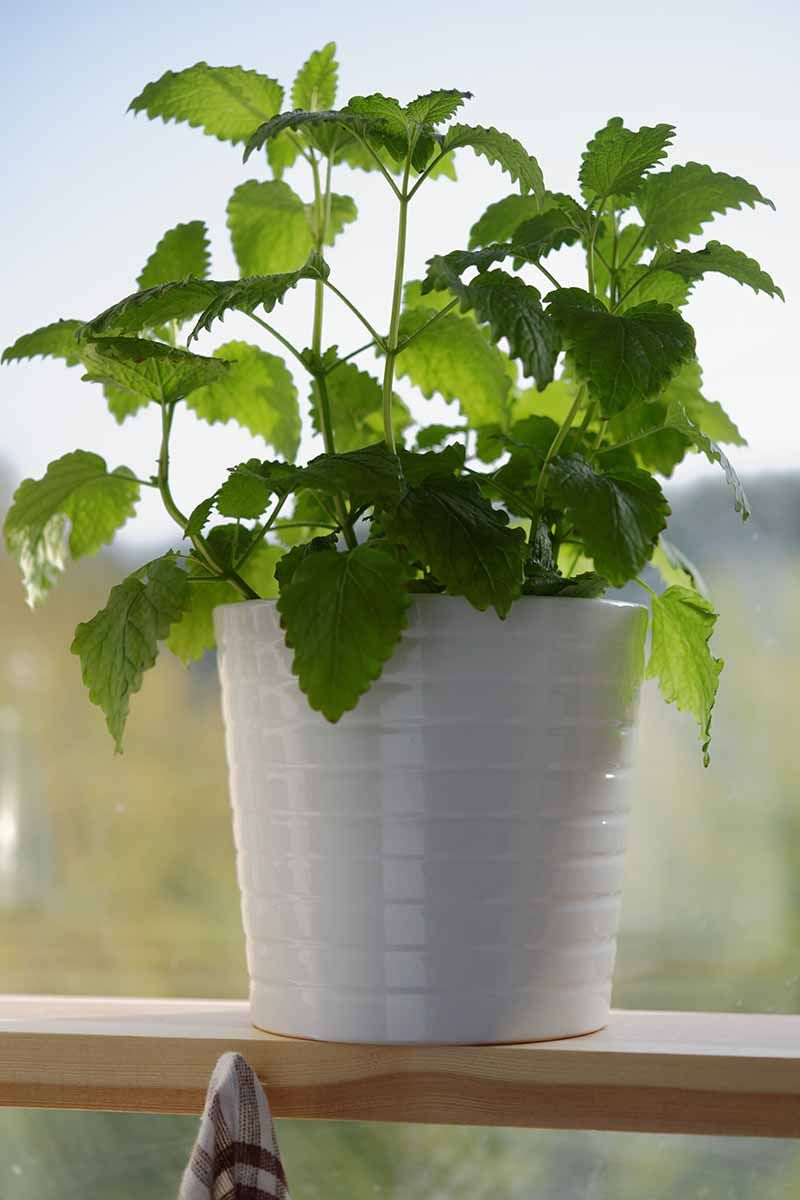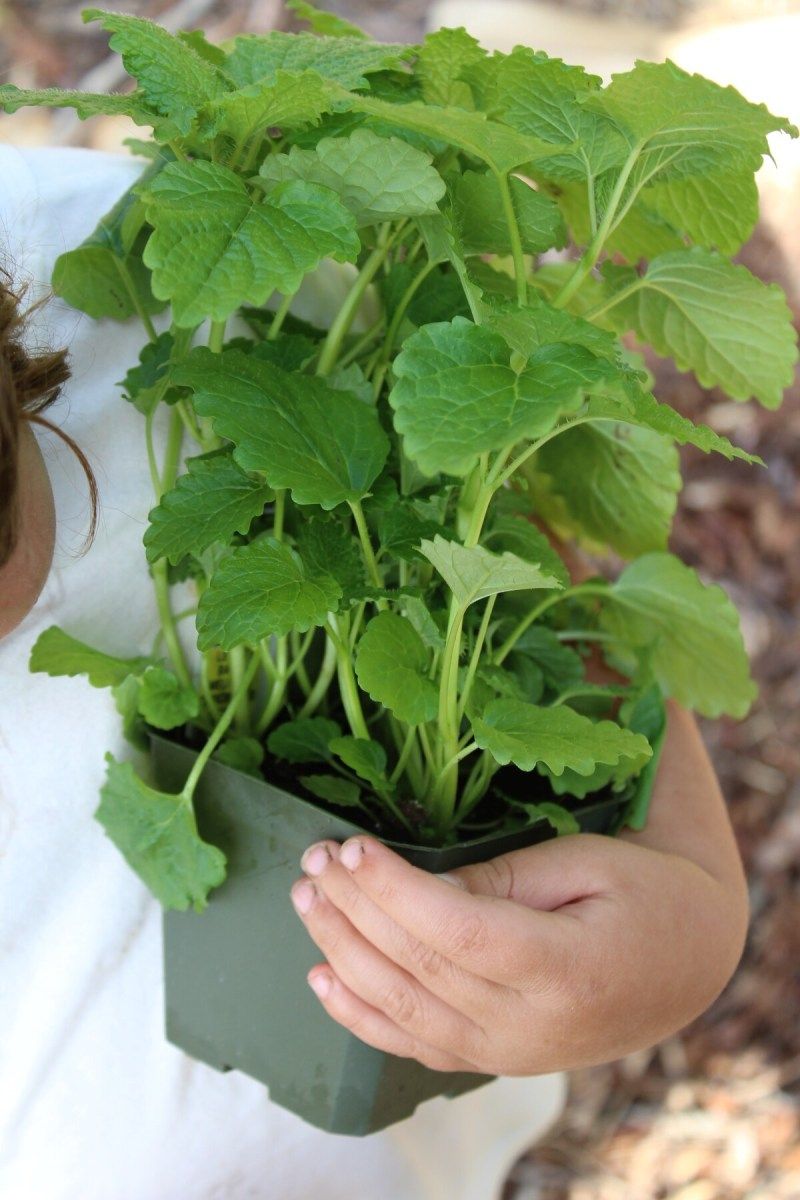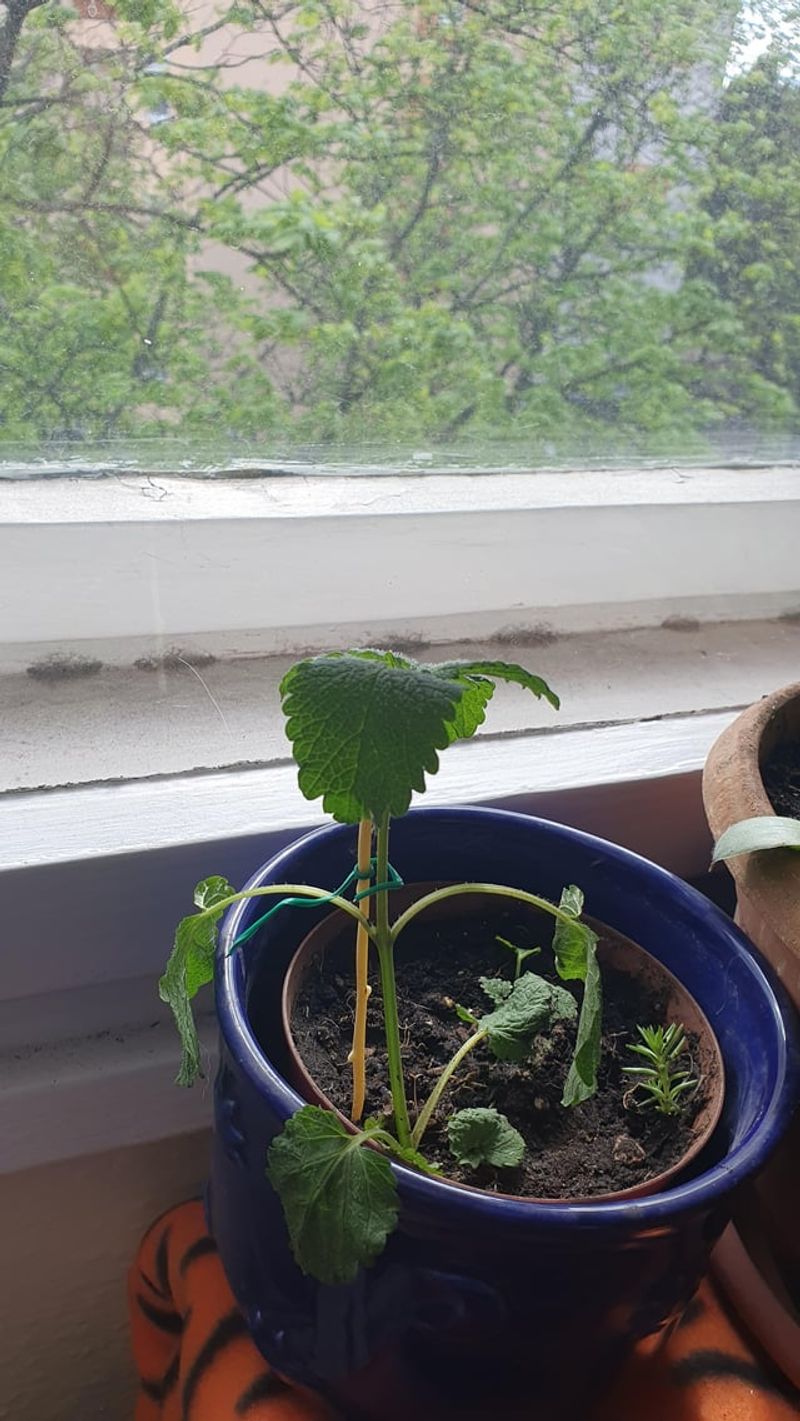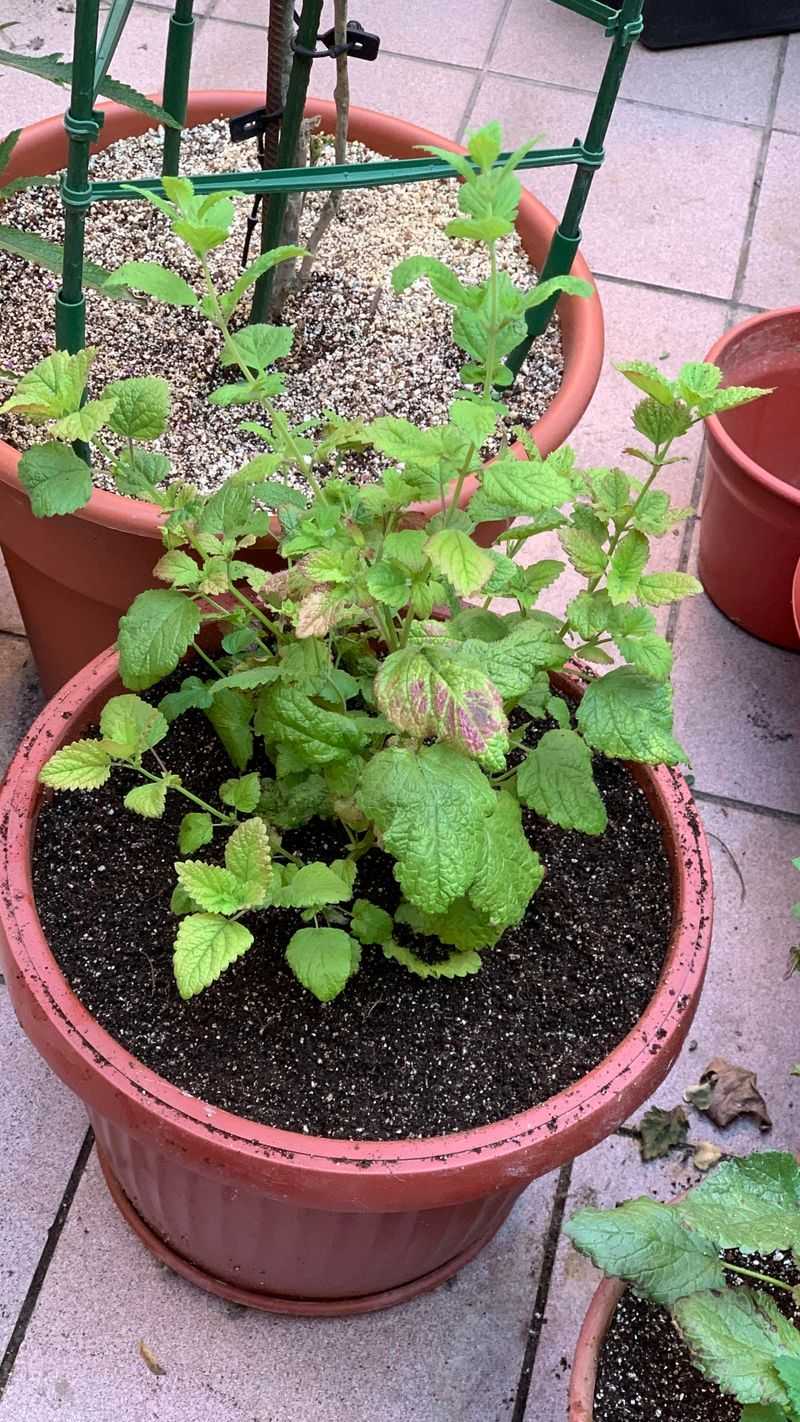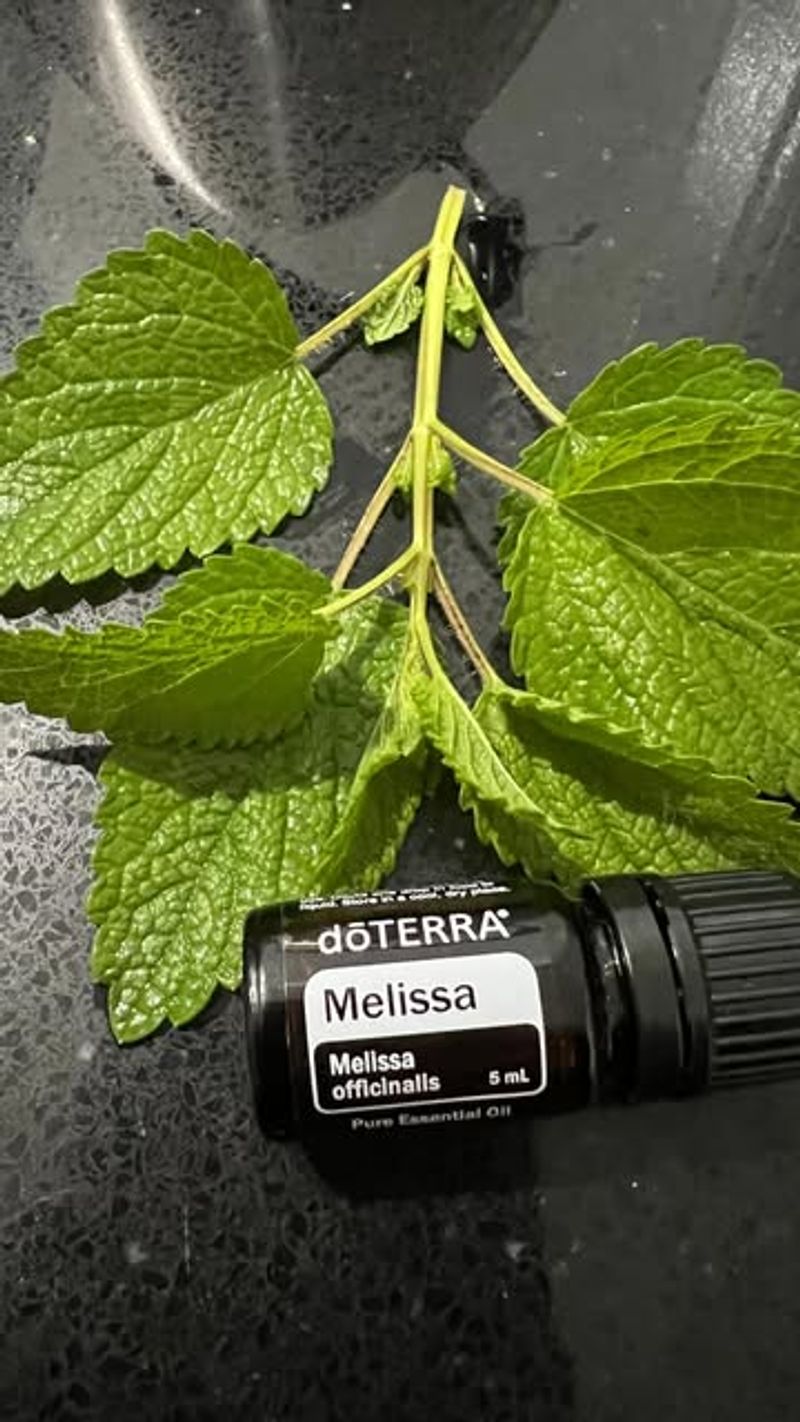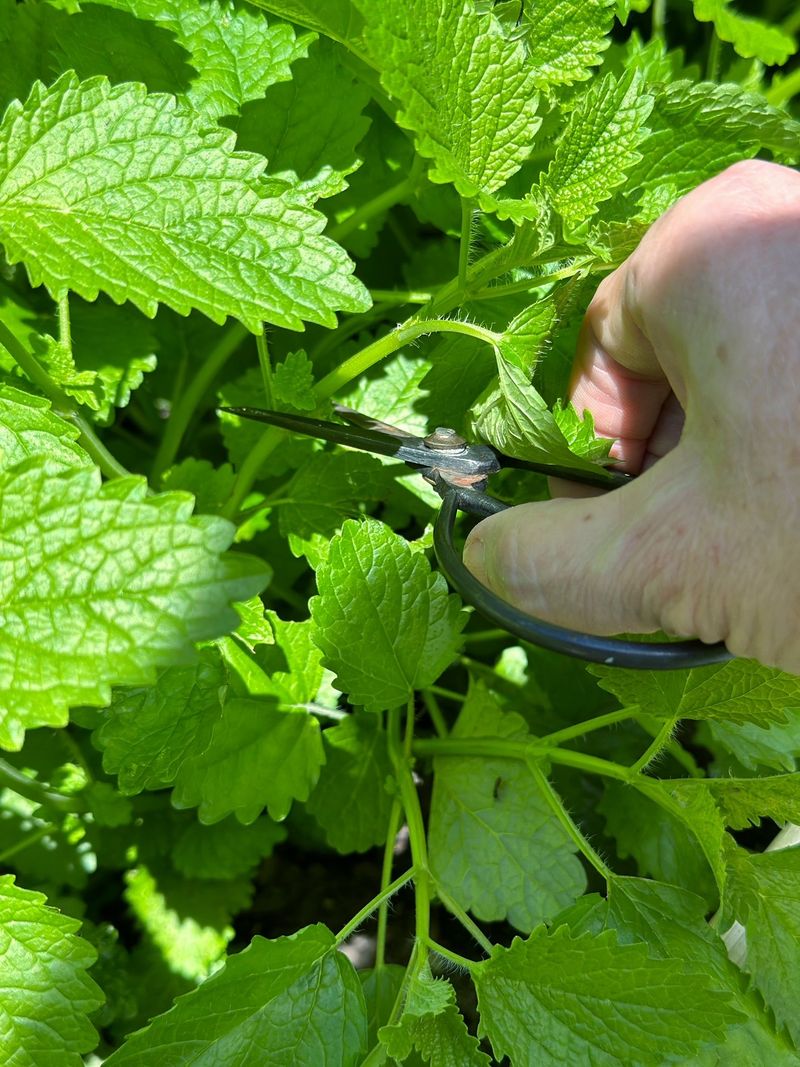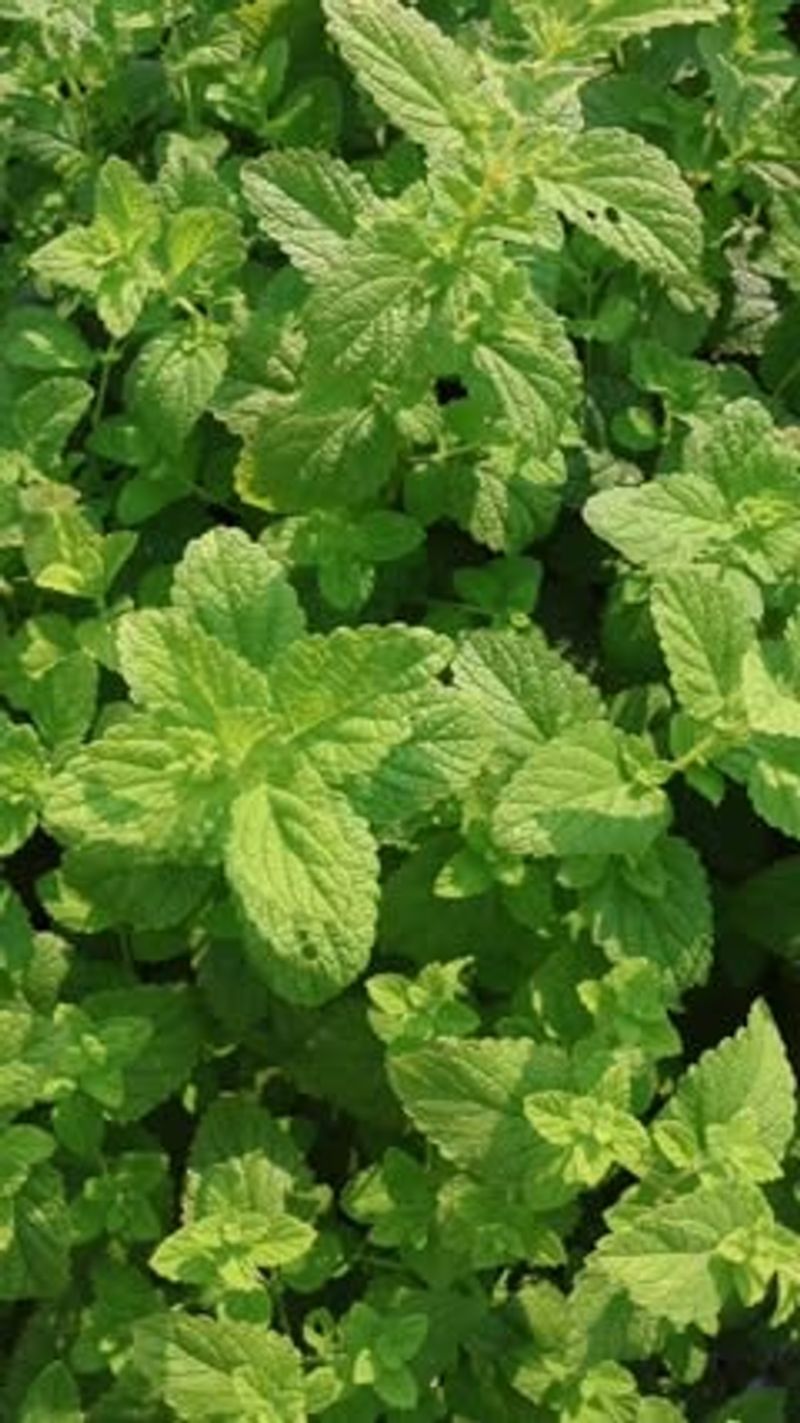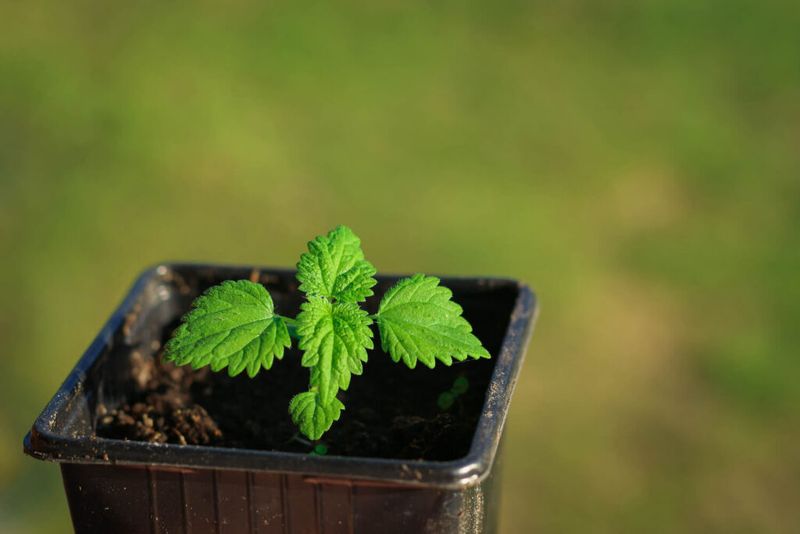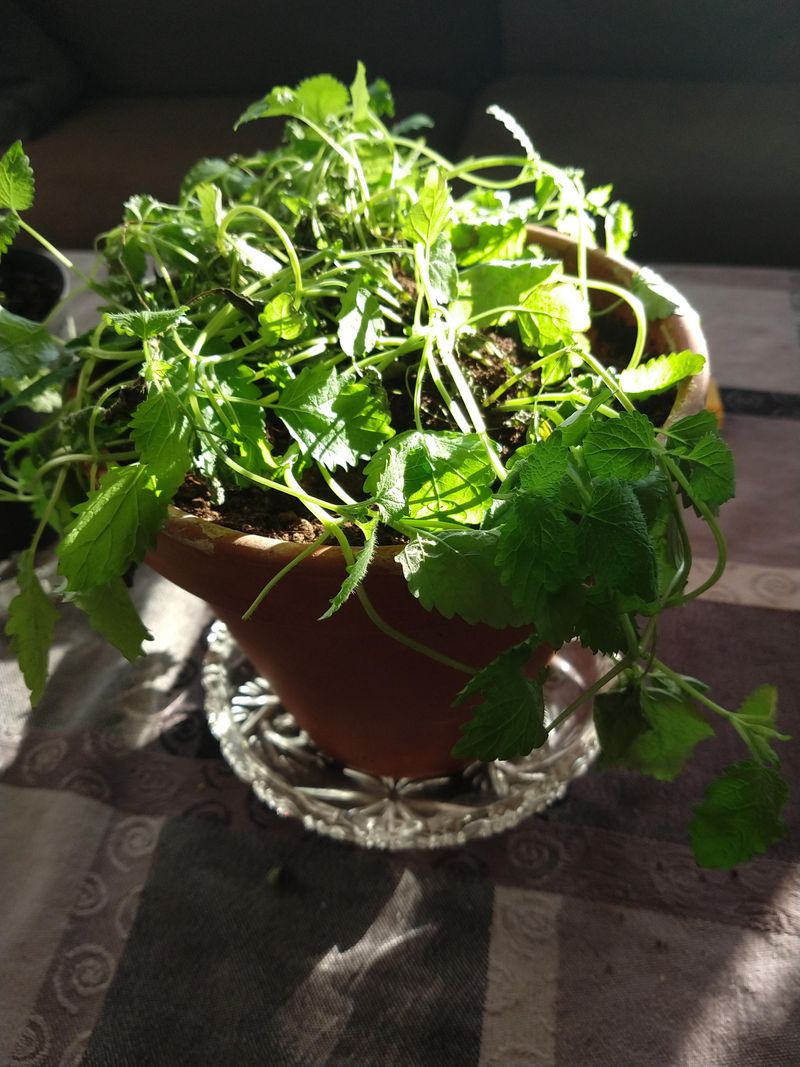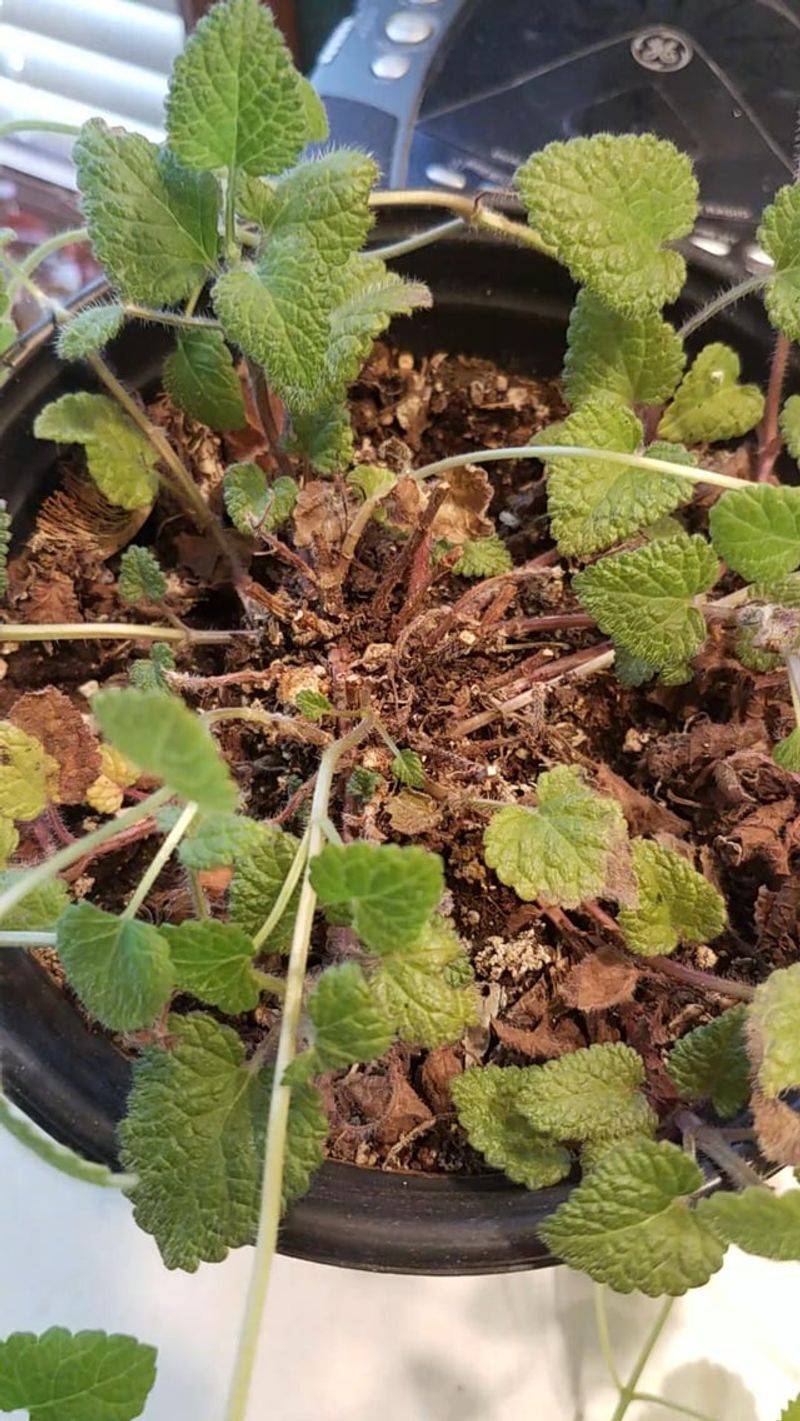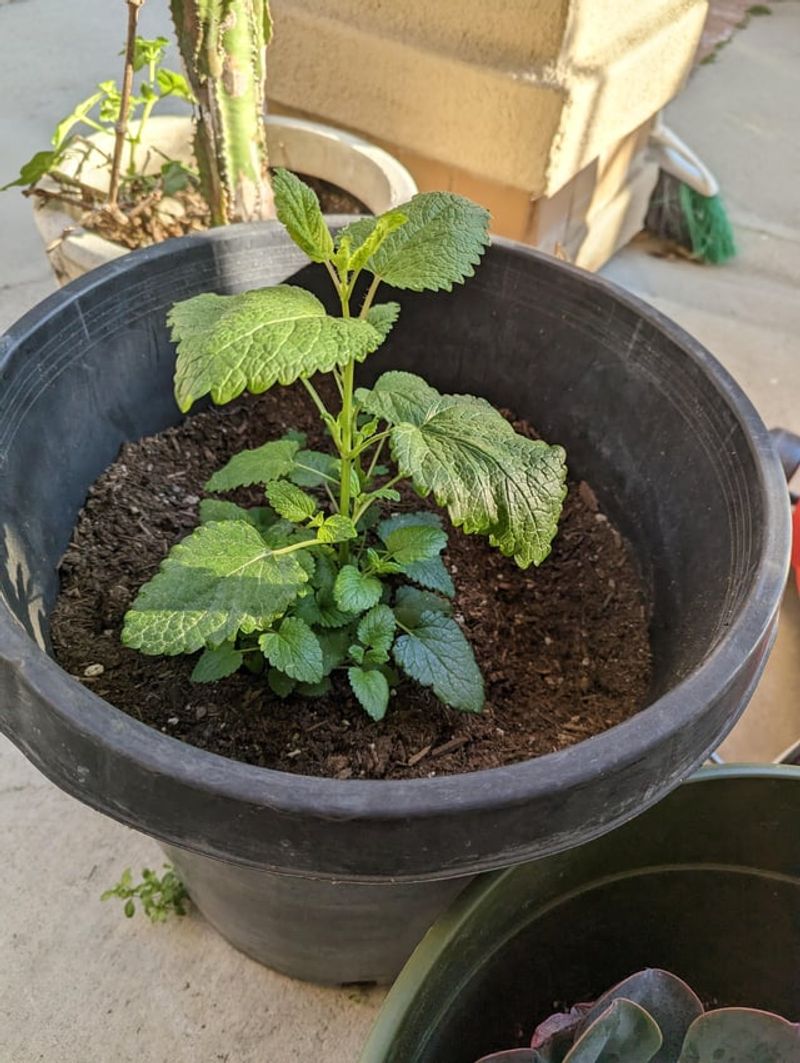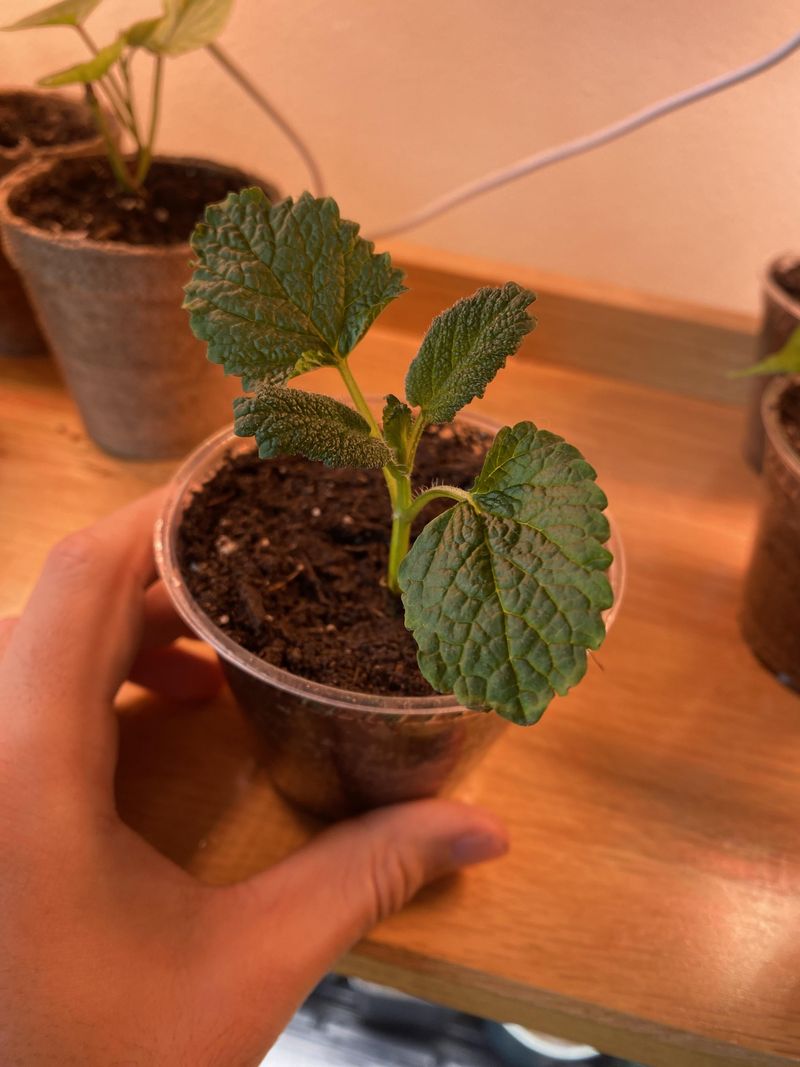Lemon balm brings a cheerful burst of citrusy freshness to your home, making even a rainy day feel a bit sunnier. It’s part of the mint family, which means it grows fast and offers plenty—whether you’re steeping tea, flavoring dishes, or enjoying its soothing properties.
Indoors, it thrives with a sunny windowsill, well-draining soil, and regular trimming to prevent it from getting leggy. Like mint, it can spread quickly, so consider a pot with room to grow—but not too much, or it’ll get wild in no time. To keep things neat, pinch back stems often and harvest leaves generously.
A little attention goes a long way with lemon balm—and the reward is a fragrant, flavorful plant that keeps giving year-round.
1. Choose The Right Container Size
A 12-inch pot provides the perfect balance for indoor growth. Too small, and roots become cramped, stunting your plant. Too large, and you’ll encourage excessive spreading.
The container should have proper drainage holes to prevent root rot. I once tried growing in a decorative pot without holes and lost my entire plant within weeks.
Select a pot with at least 2 inches of space around your starter plant. This gives room for growth without inviting the aggressive spreading that makes lemon balm notorious in gardens.
2. Use Well-Draining Potting Mix
Regular potting soil often retains too much moisture, leading to root problems. Mix equal parts potting soil, perlite, and compost for ideal drainage and nutrition.
The perlite creates air pockets that prevent compaction and allow roots to breathe. After switching to this mix, my plants developed stronger stems and more aromatic leaves.
Avoid garden soil completely when growing indoors. It compacts too easily in containers and often harbors pests or diseases that can spread quickly in a confined indoor environment.
3. Position In Bright, Indirect Light
Morning sunlight provides energy without the intensity that can scorch leaves. East-facing windows typically offer the perfect balance of light for indoor herbs like lemon balm.
If you notice leggy growth with long stems and sparse leaves, your plant needs more light. My kitchen plant struggled until I moved it from the dining room to a brighter spot near the window.
During winter months when light is scarce, consider supplementing with a simple grow light. Four hours of supplemental lighting can prevent the spindly growth that makes plants look unhealthy and reduces leaf production.
4. Maintain Consistent Watering Schedule
Water only when the top inch of soil feels dry to the touch. Overwatering causes yellowing leaves and eventually root rot, while underwatering leads to crispy, brown edges.
Consistency matters more than frequency. My plants do best with thorough watering once the soil surface has dried, rather than frequent small sips that never reach the deeper roots.
Use room temperature water instead of cold tap water. The shock of cold water can stress plants and slow growth, something I noticed immediately after switching to letting water sit overnight before using it.
5. Prune Early And Regularly
Regular trimming encourages bushier growth rather than tall, leggy stems. Start pinching back when your plant reaches 6 inches tall, removing the top set of leaves.
Focusing on the growing tips signals the plant to branch out rather than up. The most dramatic improvement in my indoor herbs came after I started weekly tip pruning instead of occasional major cutbacks.
Save those trimmings! Fresh cuttings can be used in teas, desserts, or frozen in ice cube trays with water or olive oil for future use. Nothing goes to waste with a well-maintained indoor herb.
6. Rotate The Pot Weekly
Even indoor plants grow toward light sources, creating lopsided growth. A quarter turn each week ensures even exposure and a symmetrical shape.
Uneven growth isn’t just about appearances – it affects the overall health of your plant. When I started rotating my herbs regularly, the previously bare sides filled in with new growth.
Mark one side of your pot with a small dot to track rotations. This simple system ensures you’re moving the plant consistently and not accidentally favoring one side over several weeks.
7. Maintain Proper Humidity Levels
Indoor heating systems often create dry conditions that stress moisture-loving herbs. Grouping plants together creates a microclimate with higher humidity levels.
Misting leaves occasionally helps, but avoid soaking the foliage, which can lead to fungal issues. After trying various humidity methods, I’ve found pebble trays filled with water beneath pots provide consistent moisture without risk.
Keep away from heating vents and radiators, which create hot, dry air currents. My most successful indoor herbs grow at least three feet from any heating or cooling sources that might create extreme microclimates.
8. Feed Sparingly With Organic Fertilizer
Heavy fertilizing produces rapid, weak growth that’s more prone to pests and disease. A diluted organic fertilizer once monthly during growing season is sufficient for healthy development.
Compost tea makes an excellent natural option that won’t burn roots or create chemical buildup. The first time I used it, the difference in leaf color and aroma was noticeable within days.
During winter months, stop fertilizing completely. The plant naturally slows its growth during this period, and adding nutrients can disrupt its natural cycle and create stress rather than supporting health.
9. Control Temperature Fluctuations
Sudden temperature changes stress plants and trigger leaf drop. Keep indoor lemon balm away from drafty windows in winter and air conditioning vents in summer.
The ideal temperature range is 65-75°F (18-24°C). Moving my plant away from the window at night during winter prevented the cold-induced yellowing I’d struggled with previously.
Watch for signs of temperature stress like wilting or curling leaves. These early warnings let you adjust placement before serious damage occurs. My kitchen windowsill proved too hot in summer afternoons until I added a sheer curtain to filter the intense heat.
10. Harvest Strategically For Fuller Growth
Taking cuttings from the top encourages side branching and fuller shape. Never harvest more than one-third of the plant at once to maintain its health and recovery ability.
Cut just above a leaf node (where leaves attach to the stem) to stimulate new growth from that point. This technique transformed my spindly plant into a compact, bushy specimen over just a few weeks.
Harvest in the morning when essential oil content is highest. The aroma and flavor will be noticeably stronger than afternoon cuttings, something I discovered after years of evening harvesting produced less fragrant results.
11. Prevent Flowering For Leaf Production
Once flowering begins, leaf production declines and flavor diminishes. Watch for the telltale signs of tiny flower buds forming at stem tips and pinch them immediately.
Regular harvesting naturally prevents most flowering. My most productive plants are those I harvest from weekly, which keeps them in perpetual vegetative growth rather than reproductive mode.
If your plant does flower, don’t panic – simply cut back all flowering stems to their base. The plant will redirect energy back to leaf production, though you might notice a brief slowdown in growth during this transition period.
12. Monitor For Common Indoor Pests
Spider mites and whiteflies particularly love indoor herbs. Check the undersides of leaves weekly for tiny moving dots or sticky residue that signals their presence.
Introduce prevention early by wiping leaves with a damp cloth monthly. This simple practice removed dust that attracts pests and helped me spot a potential infestation before it took hold.
Treat minor problems with insecticidal soap rather than harsh chemicals. When I discovered a few spider mites, a homemade soap spray applied three times over a week completely eliminated them without affecting the plant’s flavor or my ability to harvest safely.
13. Repot Annually To Prevent Root-Bound Plants
Roots circling the bottom of the pot indicate it’s time to repot. Spring is ideal for this task, when the plant is entering its natural growth phase and can recover quickly from the disruption.
Gently loosen bound roots during repotting to encourage outward growth. The first time I did this, I was amazed at how tightly packed the root ball had become in just one year.
Move up only one pot size at a time – about 2 inches larger in diameter. Going too large encourages excessive soil moisture and root rot, a mistake I made with my first lemon balm that quickly declined after being placed in an oversized container.
14. Provide Air Circulation Without Drafts
Stagnant air creates perfect conditions for fungal problems like powdery mildew. A small fan on low setting nearby (but not blowing directly on the plant) improves air movement.
Avoid placing multiple plants too close together where air can’t flow between them. Spacing pots a few inches apart made a noticeable difference in the health of my herb collection.
Open windows occasionally when weather permits to refresh indoor air. Even ten minutes of fresh air exchange weekly helps prevent the stale conditions that foster disease, something I started doing after noticing mildew spots on my kitchen herbs during a particularly humid week.
15. Consider Root Pruning For Long-Term Container Growth
Every two years, trim back up to one-third of the roots during repotting. This rejuvenates the plant and prevents it from becoming root-bound while keeping it appropriately sized for indoor growing.
Use clean, sharp scissors and focus on removing circling or damaged roots. When I first tried this, I was nervous about harming my established plant, but it responded with vigorous new growth within weeks.
After root pruning, reduce watering slightly until new growth appears. The trimmed root system needs less water initially, and allowing it to slightly dry encourages new root development rather than rot in the freshly cut areas.
16. Implement Natural Barriers For Containment
Copper tape around the inside rim of containers deters spreading roots. This simple trick has kept my indoor mint relatives from sending runners over the pot edge and into neighboring plants.
Line the bottom of pots with landscape fabric before adding soil. This extra layer prevents roots from escaping through drainage holes while still allowing excess water to flow through.
Consider double-potting particularly vigorous plants. Place your planted container inside a slightly larger decorative pot with no drainage holes. This creates a physical barrier that catches any escaped stems or roots before they can reach other surfaces.
17. Rejuvenate With Stem Cuttings Annually
After 2-3 years, indoor lemon balm often becomes woody and less productive. Taking stem cuttings to start fresh plants maintains vigor without the messy overgrowth of mature specimens.
Select 4-inch stem tips without flowers, remove lower leaves, and place in water until roots develop. My success rate improved dramatically when I started changing the water every other day instead of letting it sit stagnant.
Start new plants before discarding old ones to maintain a continuous supply. The young plants produce more tender, flavorful leaves than their older counterparts, something I noticed immediately when comparing tea made from each.

